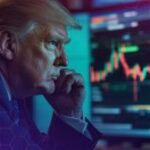Morgan Stanley has some reflections on the year’s strange, narrow, tech-powered equities rally. It’s like corporate responsibility but instead of stakeholder principles there are GPU rigs, apparently:
The ongoing AI debate resembles the early stages of the ESG asset upswing, when investors divided their portfolio into ESG-positive and ESG-negative narratives. Most non-tech investors are not at the point of quantifying what AI means for their portfolios’ earnings expectations, but appear wary that others may be starting to think about a bottom-up reassessment of their holdings’ terminal growth and margin assumptions for this new paradigm. For ESG this process started in earnest in 2018-2020 and remains an ongoing debate, more recently evolving to a rate-of-change debate. Some investors believe AI will follow — or already is following — a similar bifurcation process.
To recap, the S&P 500 is up 8 per cent so far this year because a few AI-adjacent companies have gained 20 per cent plus. The biggest five stocks in the index account for 75 per cent of its performance and have grown to nearly 20 per cent of its weighting. Exclude them and the S&P would be off 2 per cent in 2023.
And mostly, investors are thinking about it wrong, Morgan Stanley says. AI’s not the new electric vehicle because it’s more broadly disruptive than that . . .
The transition to EVs is a favoured analogy from recent history. This is not comparable in our view. EVs are not a “platform + killer app” transition from combustion engines in the way Generative AI is. Nonetheless, the investment conclusions are not dissimilar. Just as with the EV transition, in AI it is too early to determine the non-tech winners post-transition. Therefore, the unknown but non-zero capital investment required for incumbents to keep pace with disruptors likely requires a higher discount rate on certain equities (or their sum of the parts) until there is better clarity on (1) long term ROIIC; (2) competitive dynamics; (3) AI strategies from companies.
. . . but when talking about all this coming disruption, the bank’s clients don’t seem particularly imaginative:
Most generalist investors we have met prefer to think about the market even more simply still: businesses driven by tangible assets vs businesses driven by intangibles. The latter requiring further analysis and possibly higher cost of capital than previously. And the former — whilst less scalable — could be relative outperformers over the short- to medium-term as the market assesses when and how these AI dynamics flows through to top line or EBIT across sectors and companies. Proprietary data and the quality thereof, will become a much more important metric in this new world of tangible vs intangible discussions, but one which — in the absence of companies giving more detail — will entail subjective determinations by investors. Tangible industries being leaned on most regularly include electrification/grid names, renewables and aerospace.
In the meantime, Morgan Stanley has been telling them to buy media and publishing companies such as Pearson, because they have big proprietary data sets on which to train large language models.
“Periods of euphoria” will probably follow the current Chegg-inspired gloom, though investors usually assume the worst until proven otherwise, it says:
Investors are likely to focus increasingly on the responses of management teams to the new technology, rewarding those with credible strategies and investment plans, and punishing those without a coherent plan.
So, nothing whatsoever like ESG.
Further reading:— How not to talk about AI with your shareholders (FTAV)— This awfully fragile narrow no-good rally (FTAV)— Lord make me ESG, but not yet (FTAV)
















